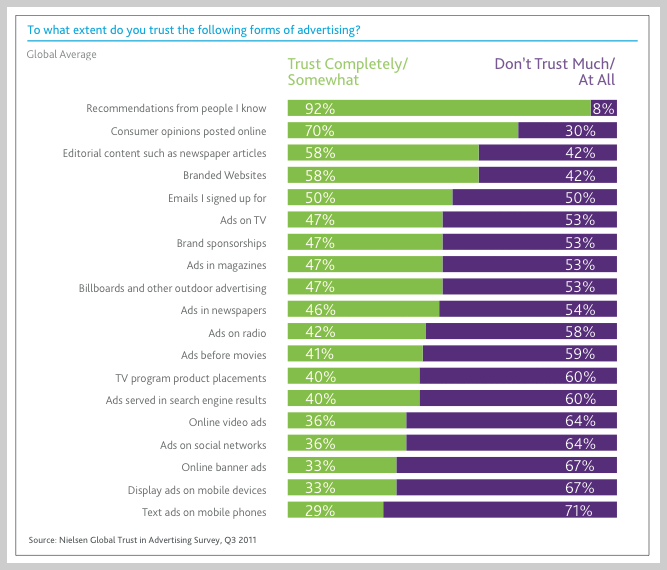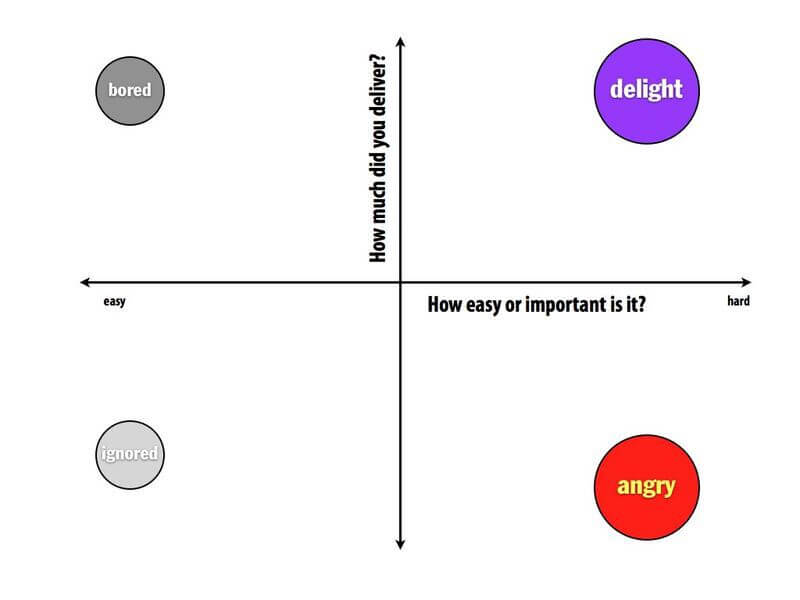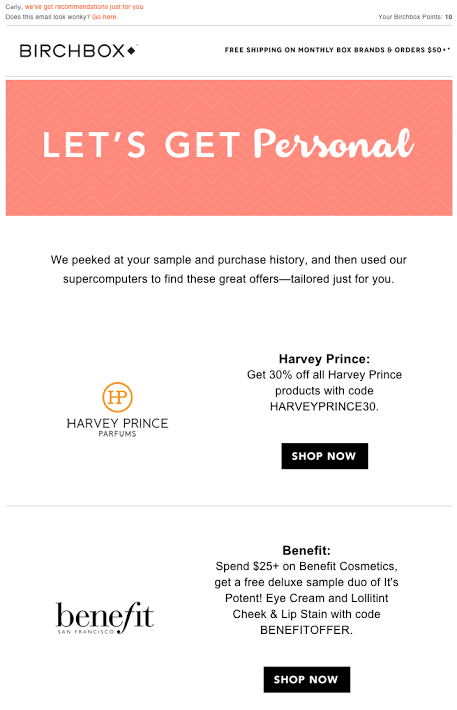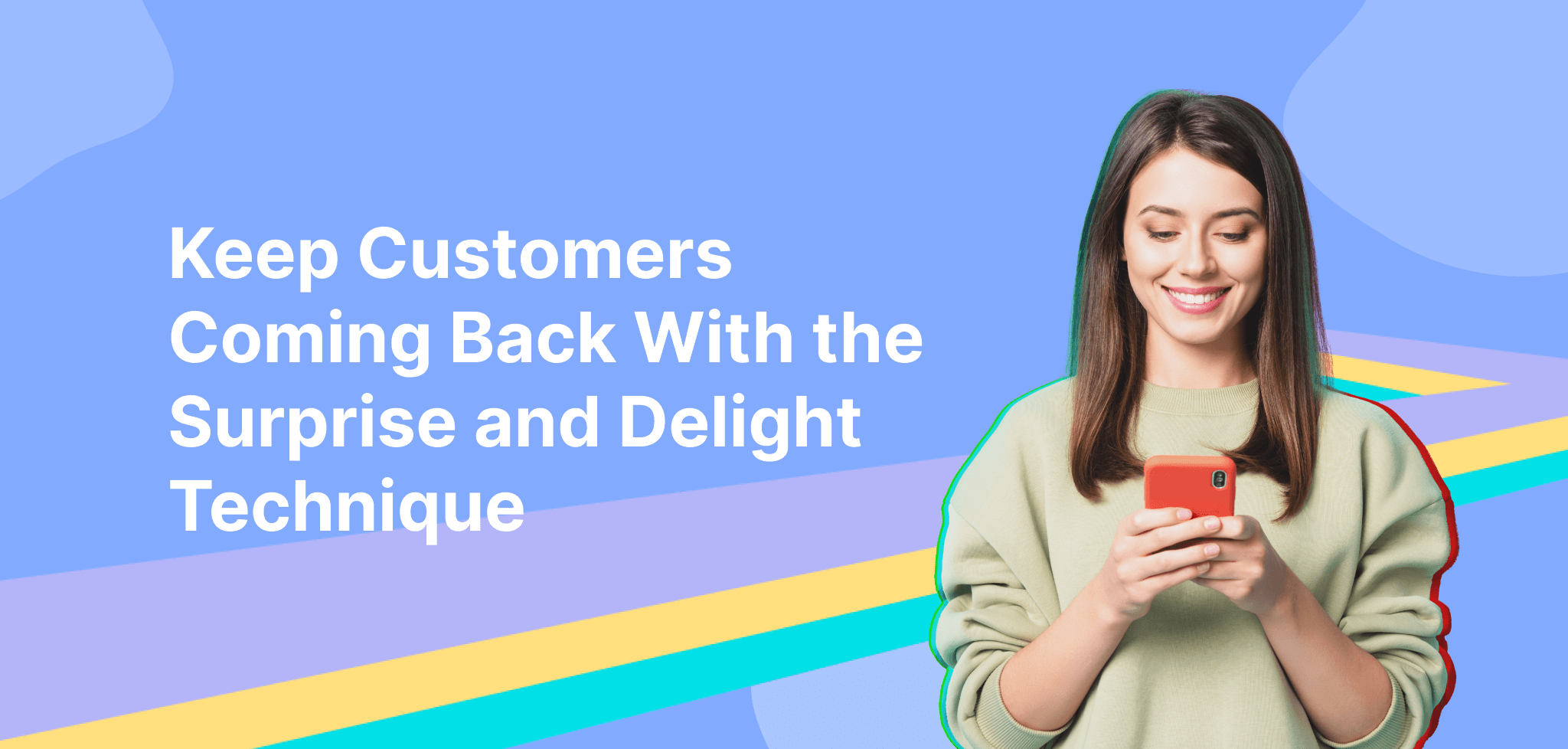Las tarjetas de fidelidad me han roto la cartera. Mi cartera de cuero favorita reventó bajo la presión de estas tarjetas parecidas a las de crédito, así que decidí mirar con más prudencia dónde residen realmente mis lealtades.
¿El resultado? Mi auditoría de cinco minutos de la cartera me llevó a encontrar un nuevo hogar para seis tarjetas de fidelización: la papelera. Me quedé con una (no puedo rechazar comida tailandesa con descuento). Aproximadamente la mitad de todas las tarjetas de mi cartera, ahora semifuncional, eran tarjetas de fidelización sin usar que había recogido en cafeterías, bares de burritos y tiendas. Tal vez sea culpa mía por haber recogido tantas, pero me hizo pensar en estos preponderantes trozos de plástico. Son una de las estrategias de retención de clientes más baratas y habituales. A juzgar por la cantidad de negocios que producen estas tarjetas, deben funcionar, ¿no? Error. Se han convertido en algo tan estándar que ya no sorprenden a los clientes. Y tampoco son muy agradables (a nadie le gusta que le rompan la cartera).
Mantener al cliente online
La lealtad es cada vez más difícil de comprar. Motivar a los clientes para que vuelvan y repitan es lo que todo vendedor quiere hacer, pero no es tarea fácil. De hecho, es incluso más difícil para los vendedores online que para los que venden en la calle. Los programas de fidelización no son nada nuevo, pero pueden funcionar. Compra siete cafés en tu cafetería local y llévate uno gratis. O consigue un 25 por ciento de descuento en tu próxima compra superior a 50 euros en una tienda de ropa. Este tipo de esquemas pretenden deleitar, pero su prevalencia ha reducido la capacidad de hacerlo. Esto también se aplica a los programas de fidelización online. La popularidad y la prevalencia hacen que estas tácticas ya no complazcan a los clientes como antes. Los compradores tienen acceso a millones de vendedores online que ofrecen aún más productos. ¿Cómo generar negocios repetidos en un entorno tan hipercompetitivo? ¿Cómo puedes hacer que tu negocio de venta online destaque entre la multitud? ¿Qué estrategia puedes seguir para sorprender y deleitar a tus clientes?
Cómo «sorprender y deleitar» crea clientes fieles
Sorprender y deleitar» es una estrategia que ofrece a los clientes ventajas imprevistas para renovar el interés por sus productos y servicios y amplificar los mensajes.
¿Por qué es tan importante el elemento sorpresa? Porque es adictivo. La sorpresa cambia el comportamiento, es barata, turboalimenta las emociones y alimenta relaciones más apasionadas entre clientes y marcas, según la Harvard Business Review. Las investigaciones del Grupo Gartner demuestran que retener con éxito a los clientes es un motor clave de los beneficios. Un aumento del 5% en la retención de clientes puede suponer un incremento de los beneficios de entre el 5% y el 125%. Si se aplican con cuidado y eficacia, la sorpresa y el deleite pueden crear un ciclo de felicidad para tu empresa. Una estrategia de sorpresa y deleite tiene tres objetivos fundamentales:
- Fideliza a tus clientes
- Crea clientes que gasten más
- Motivar el marketing boca a boca
Si se emplea eficazmente, genera una de las formas más poderosas de marketing: el boca a boca.

Para la generación que confía en la prueba social antes de comprar productos y utilizar sitios web, el éxito del marketing boca a boca es oro. Si tus experiencias con los clientes son lo suficientemente impactantes como para que las compartan con otros, un acto de amabilidad podría amplificarse a miles de nuevos clientes potenciales. En resumen, mantén contentos a tus clientes actuales, incentívalos a gastar más y deleítalos lo suficiente como para que se lo cuenten a sus amigos, creando así más negocio y exposición para ti.
Sorpresa y deleite» y atención al cliente
Los gigantes del comercio electrónico, como Amazon, han estandarizado (y subido el listón) de muchos diferenciadores competitivos anteriores, como la calidad del producto, los plazos de entrega y el embalaje, por nombrar algunos. El cliente online tiene mucho donde elegir, y en cuanto a experiencia. Pero hay un área que puedes empezar a dominar hoy mismo: laatención al cliente. En las consultas de atención al cliente se encuentra el segmento más airado, insatisfecho, confuso, inquisitivo e interesado de tu público. Es el lugar perfecto para lanzar una estrategia de sorpresa y deleite. Deleitar a un cliente requiere mucha reflexión y esfuerzo. Por eso debes combinarlo con la sorpresa, porque no tienes ni debes hacerlo siempre. Pero cuando percibas una oportunidad de sorprender y deleitar, debes aprovecharla. La técnica de «sorprender y deleitar» tiene sus raíces en la teoría del comportamiento del consumidor. La estrategia suele utilizarse en el punto de venta o en las comunicaciones postventa. En estas fases, el cliente ha expresado suficiente interés y deseo de comprar tu producto en primera instancia. Ofrecerles algo extra después de la transacción podría parecer una gratificación. Estos clientes ya están en cierto modo satisfechos, y ofrecerles ese extra de placer podría ser una ganancia fácil para que repitan. Pero la verdadera historia es si puedes cambiar las emociones de un cliente furioso: tomar su enfado, pasar por alto el aburrimiento y la ignorancia y lanzarlo directamente al reino del deleite. Puedes ver en la escala de abajo que convertir la experiencia de un cliente del enfado al deleite no es tarea fácil.

Convertir a un cliente descontento en uno feliz es poderoso porque representa un cambio monumental en la experiencia del cliente… y en su estado de ánimo. Si pudieras conseguirlo, sería una historia digna de contar. Por eso, aplicar «sorpresa y deleite» a tu experiencia de atención al cliente puede ser un poderoso generador de fidelidad del cliente. Para hacerlo, hay tres cosas que debes identificar:
- El problema de tu cliente
- Cómo proporcionar una resolución rápidamente
- ¿Cómo añades valor a la experiencia del cliente de una forma que normalmente no esperaría?
Los dos primeros puntos son los que debes tratar de completar en todas tus interacciones con un cliente. Puedes conseguir que un cliente esté muy satisfecho resolviendo rápidamente su problema. Pero en el tercer punto es donde reside la oportunidad de sorprender y deleitar a tus clientes.
Sorprender y deleitar» en el comercio electrónico
Las campañas online de sorpresa y deleite más populares, que siguen teniendo mucha tracción, son:
- Ofertas personalizadas
- Eventos exclusivos
- Actos de bondad al azar (los mejores)
Estos dos primeros ejemplos no son nativos del servicio de atención al cliente, pero pueden utilizarse en tus interacciones para complacer -y apaciguar- a tus clientes. El tercer ejemplo puede ser el más poderoso, y pertenece al equipo de atención al cliente. Veamos un ejemplo de cada estrategia.
1. Ofertas personalizadas
Ofrecer una oferta personalizada después de que un cliente haya realizado una compra demuestra que intentas construir una relación de tú a tú con tus clientes. Sabes quiénes son, qué les gusta y quieres mejorar su experiencia anticipándote a lo que puedan necesitar. Enviar la oferta en un correo electrónico personalizado y ofrecerles un descuento exclusivo para ellos puede motivar la repetición de las ventas y fidelizar a tu cliente. Pero no lo hagas para cada compra. Haz que la interacción sea única. Echa un vistazo al siguiente ejemplo de Birchbox.

No se trata de un correo electrónico genérico del tipo «puede que también te guste» que Birchbox ha preparado. Se trata de un intercambio personal entre tu empresa y el vendedor cuyo objetivo es mejorar su bienestar, recompensarle por la compra de tus productos y demostrarle que no eres el vendedor online medio. También enmarca inteligentemente cómo utilizó el historial de compras del cliente para hacer estas recomendaciones, en un tono transparente y amistoso.
2. Actos exclusivos
Ofrecer a un cliente un regalo o una experiencia que parece demasiado buena para ser verdad, y que parece única, crea un vínculo más fuerte entre la empresa y el cliente. También puede crear cierta expectación en torno a tu empresa. Por ejemplo, el Prime Day de Amazon. El gigante del comercio electrónico tomó la plantilla del Cyber Monday y creó su propio gran evento de ventas. Por supuesto, esto no es algo que todas las empresas puedan imitar, pero hay lecciones valiosas que aprender. Amazon recompensa a sus miembros más fieles y que más gastan con una bonanza de ventas. Para crear más expectación en torno al evento, no anuncia la fecha. Al crear este evento exclusivo para los miembros Prime, ha impulsado más inscripciones a su suscripción premium. Estas tácticas pueden aplicarse a empresas de ventas de cualquier tamaño. Combina un modelo de afiliación con un evento de ventas, y tendrás la capacidad de deleitar a tus compradores más fieles y hacer que tu negocio sea más atractivo para nuevos clientes. He aquí un ejemplo sencillo pero muy eficaz del minorista deportivo Pro-Direct Sports de cómo aprovechar eventos específicos de tu sector para generar más ventas.

Pro:Direct Soccer trata de entusiasmar a sus clientes vinculando un día de ofertas de botas de fútbol con una de las fechas límite más importantes del fútbol: el día límite de traspasos de la Premier League inglesa. Aprovechando el gran interés que despierta el plazo de traspasos de jugadores entre su base de clientes, vincula su propia marca a un acontecimiento popular y permite a los clientes aprovechar su entusiasmo por el deporte comprando ropa deportiva con descuento. ¿Hay eventos en tu sector que sean significativos para tus clientes? Únete a la expectación y consigue más ventas. Invita a un número selecto de clientes. Utilízalo como herramienta para convertir a tus clientes enfadados en felices invitándoles a estos eventos después de resolver sus dudas.
3. Actos de bondad al azar
Esta estrategia está profundamente arraigada en ofrecer una experiencia de atención al cliente única y encantadora. Cuando los actos de amabilidad al azar irrumpen en las redes sociales -y a veces incluso en los medios informativos- se convierten en oro en polvo del marketing. ¿Cuántas veces has visto una experiencia increíble de atención al cliente con una empresa compartida en las redes sociales o en un sitio de noticias de entretenimiento? El valor de la amabilidad es inconmensurable e impredecible, pero si puedes sorprender y deleitar a un cliente insatisfecho, provocar un giro de 180 grados en sus emociones podría motivarle a compartir su experiencia y, a su vez, a respaldar tu marca. Los actos de amabilidad al azar pueden ir desde notas escritas a mano (véase más arriba) para mostrar tu agradecimiento, hasta ir más allá para hacer feliz al comprador (véase la historia del pan jirafa de Sainsbury’s). Estos actos pueden ser increíblemente diversos: no hay un ejemplo que sirva para todos. Si llegas a conocer y comprender a tus clientes y a entender su relación con tus productos y tu empresa, hoy puedes ofrecer a un afortunado comprador una experiencia única, sorprendente y encantadora.
Qué promete el uso exitoso de la técnica de «sorprender y deleitar
Ganas el poder de complacer a tus clientes hasta el punto de que se sientan agradecidos por hacer negocios contigo. Al crear un sentimiento de gratitud, creas un momento memorable entre tu empresa y el cliente que va más allá de la transacción: crea una relación. Así que sorprende, deleita y ofrece el tipo de atención al cliente que inspira gratitud en tus clientes. Cuando lo consigas, la fidelidad vendrá sola. Pero la lealtad sólo es buena si dura, y la longevidad requiere algo más que tácticas. Para cumplir su promesa, la técnica de «sorprender y deleitar» tiene que formar parte del ADN de tu empresa. ¿Será un experimento de tres meses en el que cambias un poco las cosas? ¿O se convertirá en el reflejo que has inculcado en tu empresa, que inspira a tus clientes a contárselo a sus amigos y da los resultados prometidos? Es hora de empezar a pensar más allá de la transacción. En un espacio donde la lealtad es escasa, un poco más puede llegar muy lejos.
Reserva una demostración para saber más sobre cómo eDesk puede ayudarte a deleitar a tu cliente. ¿Listo para empezar ya? Pruebe eDesk gratis durante 14 días, sin necesidad de tarjeta de crédito.


